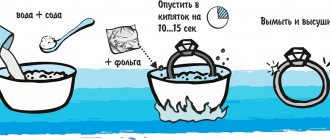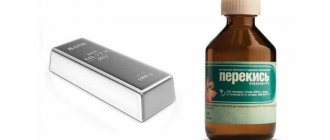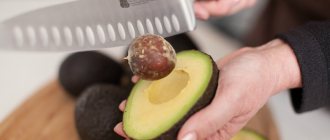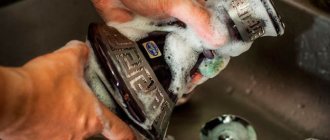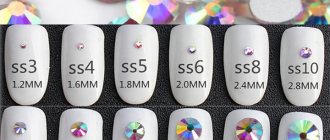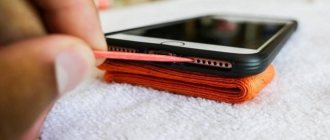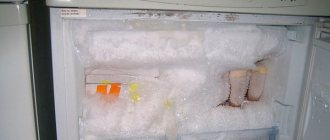Greetings. The unique shine of silver (Ag) products is due to its white color and ability to reflect 95% of the visible spectrum.
Pure metal is quite soft and easily changes shape, but is practically not susceptible to oxidation. To give Ag items strength, other components, such as copper, are added to the alloy. This leaves the precious metal susceptible to oxidation, which must be removed to maintain its shine.
One way is to clean silver with baking soda and foil. I will tell you in what situations this processing method is appropriate, and how not to harm the jewelry.
Types and causes of silver contamination
The following factors can lead to oxidation:
- storage in a room with high humidity;
- direct contact with household chemicals;
- contact of cosmetics with metal;
- frequent contact with water (for example, if you take a bath without removing jewelry);
- dirt settling on a fatty base (sweat).
Copper, which is part of the alloy, reacts with sulfur contained in human sweat and air. It is because of this reaction that silver is coated with a dark, thin layer of Ag25 (silver sulfide). The more impurities in the jewelry, the more actively it darkens. Especially cutlery.
Advantages and disadvantages of this method
Unlike mechanical removal of dirt with polishes, which remove part of the precious metal along with plaque, cleaning with soda and foil has virtually no disadvantages. The aluminum contained in the foil attracts sulfur atoms, converting Ag25 back to silver.
This cleaning method is suitable for openwork jewelry and twisted chains, because it allows you to remove plaque even in hard-to-reach places.
There is only one drawback - the item may become cloudy.
Which samples can withstand this treatment?
Expert opinion
Vsevolod Kozlovsky
6 years in jewelry making. Knows everything about samples and can identify a fake in 12 seconds
The lower the silver standard, the more susceptible it is to blackening. Pure silver is not prone to oxidation, which means it does not need cleaning with soda and foil at all. Therefore, the method will be effective for 800, 830, 875 stamps. In rare cases required for 925 and 960.
You should never clean gold-plated or blackened silver using this method, since along with unwanted contaminants you can remove the decorative coating and oxide layer.
Is it possible to enhance the effect?
You can increase the effectiveness of cleaning products with baking soda and foil by heating the water. The hotter the soda solution, the faster the silver item will be cleaned.
Ways to improve efficiency:
- Adding laundry soap or table salt to the cleaning solution - for every tablespoon of soda, add 1 spoon of soap or ½ spoon of table salt.
- Silver items should not be kept in boiling water for longer than 25–35 minutes.
- For the most severe, advanced contamination, food-grade sodium bicarbonate can be replaced with a calcined product - in this case, its dosage is reduced to 2.5 tsp.
You will learn: how to clean any silver product using home methods (7 best ways); about cleaning silver with special means, as well as...
Baking soda combined with foil is a simple, affordable and effective way to clean silver items at home. It helps stop oxidative processes, remove blackness and cloudiness, and restore impeccable cleanliness and shine to jewelry.
Decoration serves as a magnificent addition to a person’s beauty. It is for this reason that every person strives to maintain their jewelry in the best possible condition. Let's look at what kind of care should be taken for silver items so that they serve and delight us for many years.
Researchers believe that the first jewelry and objects made of silver appeared in ancient Egypt. This happened in the period from 500 AD. Considering that silver is not found in perfectly pure form in nature, it was highly valued by people in ancient times. Even gold was sometimes less valuable in the eyes of our ancient ancestors. Moreover, since ancient times silver has been given symbolic as well as magical meaning. It was believed that it had some unearthly power.
Today, many homes contain silver items of various types. It can be:
- Jewelry;
- interior items;
- cutlery.
Over time, silver can lose its original beauty. It may simply darken. Sometimes you can notice a green or blue coating on an object made of silver metal. What about shine? Is it possible to restore the product to its former charm? Let's try to figure out whether it is possible to do this on our own, at home. Let's find out in more detail how soda and foil can help us.
A unique brush for cleaning windows! Will save you time and money! Our readers advise!
How to clean silver with baking soda and foil at home
This method of cleaning silver is the most gentle and affordable, since almost every home has a package of baking soda and baking foil. And even if not, they can be purchased at the nearest mass market.
The complete process, including boiling water, preparing and waiting for the result, will take no more than 10 minutes.
Precautionary measures
Some people recommend cleaning jewelry in boiling water along with baking soda and foil, but this should not be done because pieces of the material may peel off and damage the jewelry.
If objects with stones or pearls require cleaning, then this method should be abandoned so as not to spoil their appearance.
Cleaning Solution Recipes
For 1 liter of hot water you need 50 g. soda You can dissolve the powder in an already heated liquid, stirring thoroughly, or add it before boiling. No further additional components are required.
Preparation of the solution
The reaction occurs faster when the solution is warm, or even better - boiling water.
You need to act according to the following scheme:
- add sodium bicarbonate to the water and stir thoroughly;
- Place foil on the bottom of the prepared container;
- lay out the decoration;
- pour the resulting mixture;
- wait 3-5 minutes;
- remove the product and rinse under water;
- polish.
You can also use another method:
- cover the bottom with foil;
- put decoration;
- add the required amount of soda;
- to fill with water.
If not all blackening has been removed, the procedure can be repeated until the desired result is obtained.
Preparing Jewelry for Cleaning
Before processing, it is necessary to wipe the product from dust and rinse under warm water.
Cleaning process
The reaction between Ag25 and aluminum occurs only when they come into contact. Therefore, after covering the surface of the bowl with foil, you need to place the blackened object on it. Only then is soda added and everything is poured with boiling water (or a ready-made soda solution).
The compound transfers sulfur from the silver to the aluminum so the Ag25 can attach to the foil or form into small flakes. Since a slight electrical charge is formed between the connected components, the reaction process begins to hiss and foam rises. Therefore, the best place for the procedure will be the sink.
If the product becomes cloudy, you should use a soft fleece cloth and remove the sediment.
How to restore the shine of silver in 3 minutes, watch the video:
Algorithm
So, in order to quickly and efficiently clean silver jewelry, dishes or cutlery, you need to prepare about 2-3 liters of water, a roll of foil, a glass of soda and a soft cloth that does not leave lint for final wiping of the cleaned surfaces.
Having prepared everything necessary, we proceed to the procedure:
Pour the water into a stainless steel pan, set it to boil and throw crumpled pieces of foil into it. When the water starts to boil, gradually add all the soda into the liquid. Carefully lower the silver items into the liquid and keep them in the solution for about 2-3 minutes. We take out the cleaned silver and immediately wipe it with the prepared cloth.
If the degree of oxidation of silver is low, you can simply cover a heat-resistant pan with foil, pour boiling water over it and dilute soda. The jewelry should be kept in the solution until it is visually completely clear of dark deposits.
The cleaning method is clearly demonstrated in the following video:
Other cleaning methods
Soda solution can be used not only with foil.
For 0.5 liters of hot water and 2 tbsp. l. soda can be added:
- 100 ml 6% vinegar and 2 tsp. salt (leave for 10 minutes, rinse and wipe);
- 1 tsp. salt (leave for 3-5 minutes, then rinse and wipe);
- 2 tbsp. l. ammonia (immerse in the composition for 15 minutes, wash, wipe);
- ammonia and tooth powder in a ratio of 5:2:2 (apply with a soft brush, remove blackening, rinse and wipe).
If you don’t have baking soda or foil at home, but you have citric acid, you can use it to clean silver:
- dissolve 100 g in 0.5 ml of water. substances;
- put on fire and bring to a boil;
- soak the decoration in a water bath for 15-30 minutes;
- rinse and dry thoroughly.
For silver without impurities, the following recipe is suitable:
- mix ammonia and 3% hydrogen peroxide in equal proportions;
- add 1 tsp. soda;
- mix;
- lower the decorations for 15-20 minutes;
- cutlery - for 60 minutes.
In addition to improvised means, you can purchase special chemicals designed to clean silver.
Is tooth powder useful when cleaning silver jewelry?
Probably everyone is familiar with the old method of rubbing silver with simple tooth powder. With its help, the material quickly returns to its original form and begins to shine. But is this really good for metal? Tooth powder has a sharper and harder structure than, for example, soda; particles of the powder can leave microscopic scratches on the metal, and therefore you should not abuse it and rub the silver too much. Moreover, under no circumstances should it be used on jewelry coated with rhodium plating. Tooth powder will easily damage it and deprive the metal of the properties that rhodium gives it.
How to clean jewelry with stones
Products containing:
- pearl;
- amber;
- ivory;
- corals.
It is best to entrust such jewelry to craftsmen, since these elements are sensitive to any influence.
An additional way to clean silver with precious and semi-precious stones from contamination is to soak it in a soapy solution for an hour, followed by brushing with a toothbrush. Be sure to polish with a soft cloth at the end.
General rules
To ensure that cleaning gets rid of all stains and does not scratch the product, follow several rules:
- Wash your silver items every 2-3 weeks.
- Do not use abrasive substances for cleaning.
- Use only soft toothbrushes with natural bristles.
- Wipe silver with a soft cloth.
- Rinse your silver thoroughly after cleaning products.
- Dry silver items on a paper or cloth napkin using a hair dryer.
- Polish items with suede or wool.
- Do not wear jewelry for 3-4 days after plaque removal.
- To avoid corrosion, strictly observe the concentration of the solution and its exposure time.
Rules for wearing, caring for and storing silver items
It is necessary to remove dirt from silver as it turns black or at least once a year.
At the same time, it is imperative to store jewelry in a dry place, away from medications, cosmetics, perfumes and household chemicals. It would be good if these were special cases or jewelry boxes. And storage in foil can protect silver from moisture, mechanical damage, and oxidation.
Jewelry must be removed before cleaning, washing dishes, taking a bath, or using face and body creams.
Silver items that are rarely used require more careful care, so they should be cleaned every two months.

